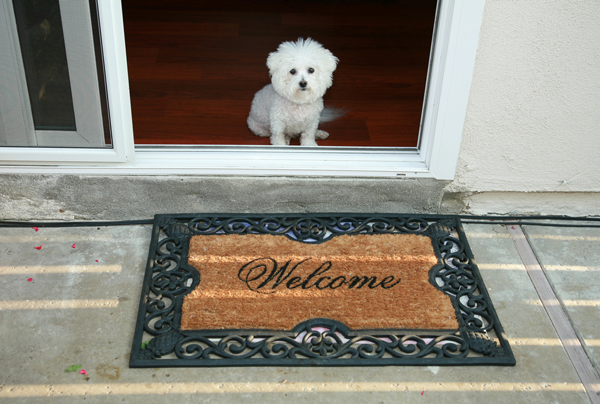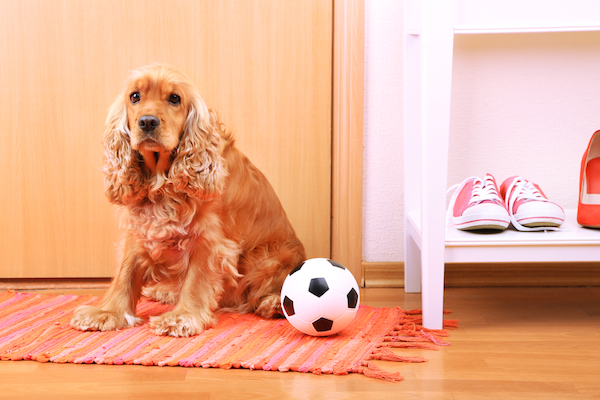Ah, the American dream: home ownership. You’ve picked the perfect family home in the suburbs. The white picket fence, the large fenced back yard for playing, and the beautiful garden for flowers and veggies are all included. You, your partner and the kids have visited the home many times before moving in. You’ve made sure the carpet and paint are the right colors, the master closet is big enough (which it never is), and the kids have chosen their bedrooms. As for the dog — wait a minute. Has the dog ever been to the new home to check it out? Has the dog had a chance to pick out his favorite room? Moving with dogs is exciting — but it could also turn into a disaster.

Amazingly, as an animal communications professional, I am consulted regularly regarding this exact scenario. It’s easy to get caught up in all the excitement and stress of relocating to a new residence. You’ve involved the entire family in the process, but you’ve never considered the impact the move and new home will have on your canine family member. From my experience, if we are excited and stressed, the dog is excited and stressed, too.
Oftentimes, this leads to a not-so-happy first visit to the home. Your dog, too, needs to get used to the new surroundings and find his way around the homestead. There are a lot of new smells, new areas to investigate and a new backyard to explore. This can be very exciting for your dog but also very stressful, since his surroundings are changing. Moving with dogs can me stressful. It is common for territory-marking to take place, for your dog to dig in the yard near the fence, for gates to be left open by movers — the list goes on.
Give your dog a tour of the new house
To avoid or at least minimize the adverse effects of a move to a new home on your dog, include your dog as early as possible in the process. Before moving in, walk with your dog on-leash through each room of the house. Spend dedicated time with him to get him comfortable in the new surroundings.
Lay your dog’s favorite blanket or doggie bed down in the room where he’ll be sleeping each night. Ask him to lie in the area, and give him a special treat. Select a dedicated area where he’ll receive his meals, and place a small bowl of food and water in that area. Check for any areas that may be a safety concern for your dog, such as basement stairs, crawl spaces, and utility rooms. Make sure these areas can be blocked off and secured so your dog can’t gain access without your supervision.
If your dog hasn’t been exposed to wooden or tiled floors and you have these in your new home, remember that they can be slippery to him until he gets used to them. Make sure your dog is aware of these areas and knows to take it easy when running or playing on these types of surfaces. The last thing you need on your moving day, or any day for that matter, is a trip to the emergency veterinary hospital.
Now hit the yard with your dog — and make note of the plants
Make sure to walk your dog around the perimeter of the yard and fence. This is a great time for him to smell the area, mark it, and become comfortable. It is also the time to check the gates to make sure they close and latch properly. Inspect the fence to see if there are any gaps where your dog could escape. Make sure he doesn’t have access to any poisonous plants (for example, English holly, English ivy, lantana, foxglove, daylilies, onions, azaleas and rhododendrons) in the garden or yard. (Check out this comprehensive list of plants that are toxic and non-toxic to dogs. Also visit the ASPCA’s list of toxic and non-toxic plants.)
Find out if your new neighbors have dogs
Introduce yourself to your neighbors and inquire as to whether they have dogs in their family. This is a great time to get to know who you’re going to be living near for the next 30 years (assuming this is your dream home). Provide a leashed introduction of your dog to the neighbors and their dogs. This will help curtail excess territorial barking and fence running or fighting. Ask to join your neighbors when they walk their dogs. Remember, even if you have a big backyard, you’ll still need to take your dog for frequent walks to ensure that he is sufficiently stimulated both mentally and physically. This will also curtail boredom, which can lead to undesired mischievous behaviors.
Moving to a perfect home with your family and your dog (or several dogs for some of you) is what you may have dreamed of all of your life. It is an exciting and fun time as well as a time to make new friends. Your dog will be glad that you and the family are happy. He, too, will feel the same excitement and relish the opportunity to meet new doggie friends. Following these suggestions will help guarantee you’re getting started on the right foot… and the right paw!
What do you think? Are you moving with dogs/have your ever moved with dogs? What are your tips? Tell us in the comments.
More on moving with dogs:
- Moving to a New Home Made My Well-Trained Dog Forget Everything He Knew
- 5 Tips for Moving into a Smaller Home with a Dog
Featured Image Credit: Dog sitting on a rug by Shutterstock





